What are the protection systems of transformers ?
Buchholz Relay is a gas-actuated relay installed in oil immersed transformers for protection against all kinds of faults. Named after its inventor, Buchholz, it is used to give an alarm in case of incipient faults in the transformer and to disconnect the transformer from the supply in the event of severe internal faults.
For protection of generators, Merz-Price circulating current system is unquestionably the most satisfactory. Though this is largely true of transformer protection, there are cases where circulating current system offers no particular advantage over other systems or impracticable on account of the troublesome condition imposed by the wide variety of voltages, currents and earthing condition invariably associated with power transformers. Under such circumstances, alternative protective systems are used which in many cases are as effective as the circulating current system. The principal relays and system used for transmission protection are
Construction of Transformer
Construction of Transformer
- Buchholz Relay providing protection against all kinds of incipient faults i.e. slow-developing faults such as insulation failure of windings, core heating, fall of oil level due to leaky joints etc.
- Earth-fault Relay providing protection against earth-faults only.
- Overcurrent Relay providing protection mainly against please to phase faults and overloading.
- Differential protection system (or circulating current system) providing protection against both earth and phase faults.
1. Buchholz Relay:
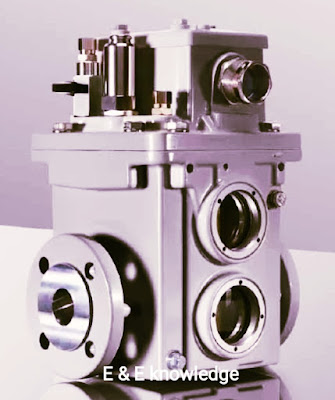 |
| Buchholz Relay |
Buchholz Relay is a gas-actuated relay installed in oil immersed transformers for protection against all kinds of faults. Named after its inventor, Buchholz, it is used to give an alarm in case of incipient faults in the transformer and to disconnect the transformer from the supply in the event of severe internal faults.
It is usually installed in the pipe connecting the conservator to the main talk. It is a universal practice to use Buchholz relays on the such oil immersed transformers having ratings in excess of 750kVA.
What is Ideal Transformer?
What is Ideal Transformer?
Construction:
The construction details of a Buchholz relay. It takes the form of a domed vessel placed in the connecting pipe between the main take and the conservator. The device has two elements. The upper element consists of a mercury type switch attached to a float.
The lower element contains a mercury switch mounted on a hinged type flap location in the direct path of the flow of oil from the transformer to the conservator. The upper element closes an alarm circuit during incipient faults whereas the lower element is arranged to trip the circuit breaker in case of severe internal faults.
Operation:
- In case of incipient faults within the transformer, the heat due to fault causes the decomposition of some transformer oil in the main tank. The products of decomposition contain more than 70% of hydrogen gas. The hydrogen gas being light tries to go into the conservator and in the process gets entrapped in the upper part of relay chamber. When a predetermined amount of gas gets accumulated , it exerts sufficient pressure on the float to cause it to tilt and close the contacts of mercury switch attached to it. This completes the alarm circuit to sound an alarm.
- If a serious fault occurs in the transformer , an enormous amount of gas is generated in the main tank. The oil in the main tank rushes towards the conservator via the Buchholz relay and in doing so tilts the flap to close the contacts of mercury switch. This completes the trip circuit to open the circuit breaker controlling the transformer.
2.Earth-fault or (Leakage protection) Relay:
An earth-fault usually involves a partial breakdown of winding insulation to earth. The resulting leakage current is considerably less than short circuit current.
The earth-fault may continue for a long time and cause considerable damage before it ultimately develops into a short-circuit and removed from the system. Under these circumstances, it is profitable to employ earth-fault relay is essentially an overcurrent Relay of low setting and operates as soon as an earth-fault or leak develop. One method of protection against earth-faults in a transformer is the core-balance leakage protection shown in fig below:
The three leads of the primary winding of power transformer are taken through the core of a current transformer which carries a single secondary winding. The operating coil or a relay is connected to this secondary.
Under normal conditions (i.e. no fault to earth ), the vector sum of the three phase current is zero and there is no resultant flux in the core of current transformer no matter how much the load is out of balance. Consequently, no current flows through the relay and it remains inoperative. However, on the occurrence of an earth-fault, the vector sum of three phase current is no longer zero.
The resultant current sets up flux in the core of the C.T. which induces e.m.f. in the secondary winding. This energises the relay to trip the circuit breaker and disconnect the faulty transformer from the system.
What is an autotransformer
The resultant current sets up flux in the core of the C.T. which induces e.m.f. in the secondary winding. This energises the relay to trip the circuit breaker and disconnect the faulty transformer from the system.
What is an autotransformer
3.Overcurrent (overload protection) Relay :
The core-balance protection described above suffers from the drawback that it cannot provide protection against overloads. If a fault or leakage occurs between phases, the core-balance relay will not operate. It is a usual practice to provide combined leakage and overload protection for transformers. The earth relay has low current setting and operates under earth or leakage faults only.
The overload relays have high current setting and are arranged to operate against faults between the phases. The schematic arrangement of combined leakage and overload protection. In this system of protection, two overload relays are connected as shown below.
The two overload relays are sufficient to protect against phase to phase faults. The trip contacts of overload relays and earth-fault relay are connected in parallel. Therefore, with the energising of either overload relay or earth relay, the circuit breaker will be tripped.
4. Differential protection system :
Merz-Price circulating current principle is commonly used for the protection of power transformer against earth and phase fault. The system as applied to transformer is fundamentally the same as that for generators but with certain complicating features not encountered in the generator application. The complicating features and their remedial measures are briefed below :
- In a power transformer, currents in the primary and secondary are to be compared. As these two currents are usually different, therefore, the use of identical transformer (of same turn ratio) will give differential current and operate the relay even under no load conditions.
The difference in the magnitude of currents in the primary and secondary of power transformer is compensated by different turn ratio of CTs. If T is the turn ratio of power transformer, then turn ratio of CTs on the l.v. side is made T times that of the CTs on the h.v. side. Fulfilled this condition, the secondaries of the two CTs will carry identical currents under normal load conditions. Consequently, no differential current will flow through the relay and it remains inoperative.
- There is usually a phase difference between the primary and secondary currents of a 3-phase power transformer. Even if CTs of the proper turn ratio are used, a differential current may flow through the relay under normal conditions and cause relay operation.
The correction for phase difference is effected by appropriate connections of CTs. The CTs on one side of the power transformer are connected in such a way that the resultant current fed into the pilot wires are displaced in phase from the individual phase currents in the same direction as, and by an angle equal to, the phase shift between the power-transformers primary and secondary currents.
- Most transformers have means for tap changing which makes this problem even more difficult. Tap changing will cause differential current to flow through the relay even under normal operating conditions. The above difficulty is overcome by adjusting the turn ratio of CTs on the side of the power transformer provided with taps.
- Another complicating factor in transformer protection is the magnetising in-rush current. Under normal load conditions, the magnetising current is very small. However, when a transformer is energised after it has been taken out of service, the magnetising or in-rush current can be extremely high for a short period. Since magnetising current represents a current going into the transformer without a corresponding current leaving, it appears as a fault current to differential relay and may cause relay operation.
In order to overcome above difficulty, differential relays are set to operate at a relatively high degree of unbalance. This method decreases the sensitivity of the relays. In practice, advantage is taken of the fact that the initial in-rush current contain prominent second-harmonic component.
Hence, it is possible to design a scheme employing second-harmonic bias features, which, being tuned to second-harmonic frequency only, exercise restrain during energising to prevent maloperation.
While applying circulating current principle for protection of transformers, above precautions are necessary in order to avoid inadvertent relay operation.
Hence, it is possible to design a scheme employing second-harmonic bias features, which, being tuned to second-harmonic frequency only, exercise restrain during energising to prevent maloperation.
While applying circulating current principle for protection of transformers, above precautions are necessary in order to avoid inadvertent relay operation.
Differential protection of transformers:
Merz-Price circulating current scheme for the protection of a 3-phase delta/ delta power transformer against phase to phase faults. Note that CTs on the two sides of the transformer are connected in star. This compensates for the phase difference between the power transformer primary and secondary. The CTs on the two sides are connected by pilot wires and one relay is used for each pair of CTs.
During normal operation conditions, the secondaries of CTs carry identical currents. Therefore, the currents entering and leaving the pilot wires at both ends are the same and no current flows through the relays. If a ground or phase to phase fault occurs, the currents in the secondaries of CTs will no longer be the same and the differential current flowing through the relay circuit will clear the breaker on both sides of the transformer.
The-protected zone is limited to the region between CTs on the high voltage side and the CTs on the low voltage side of the power transformer.
It is worthwhile to note that this scheme also provides protection for short circuits between turns on the same phase winding. When a short circuit occurs between the turns, the turn ratio of the power transformer is altered and causes unbalance between current transformer pairs.
If turn ratio of power transformer is altered sufficiently, enough differential current may flow through the relay to cause its operation. However, such short circuits are better taken care of by Buchholz relays.

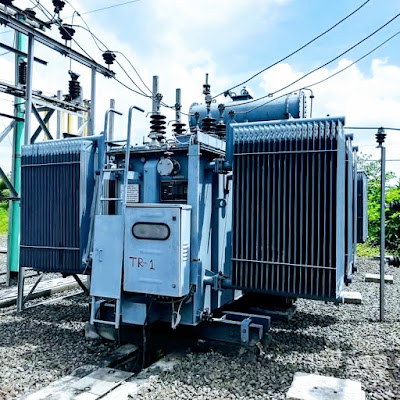

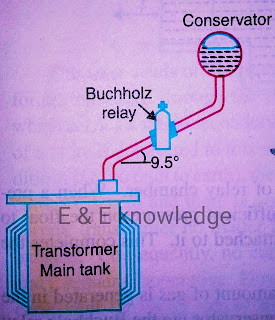

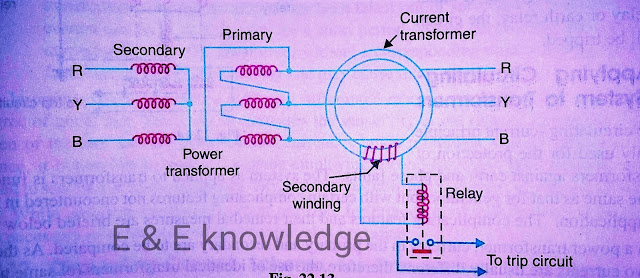
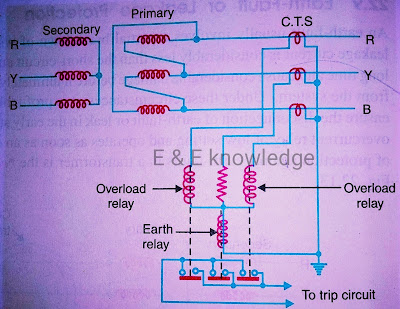
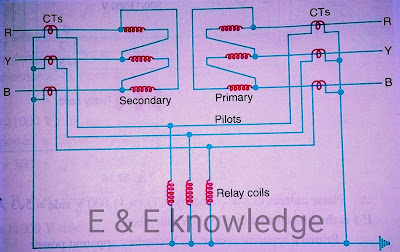
Please do not enter any spam link in the comment box. ConversionConversion EmoticonEmoticon